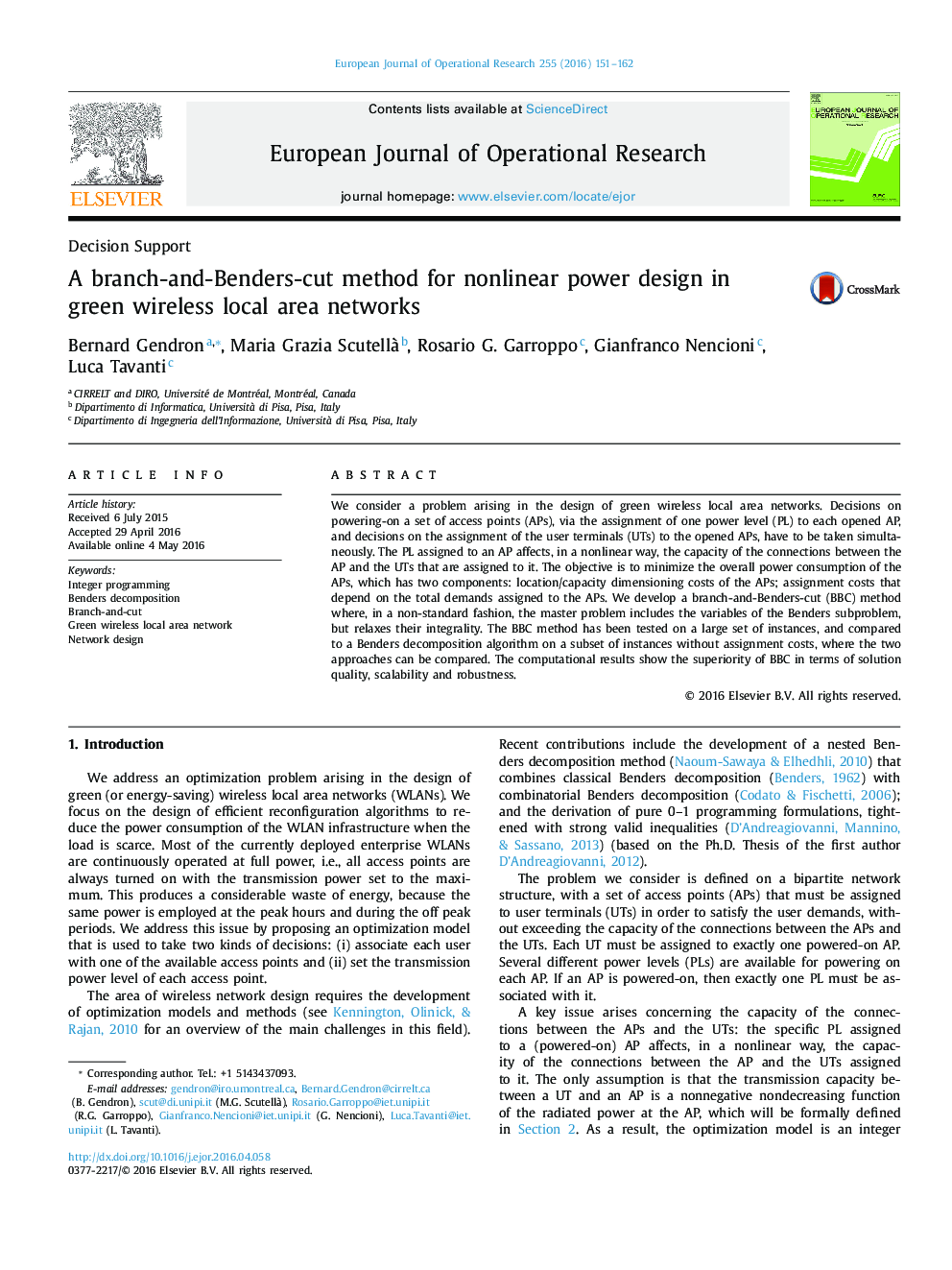| Article ID | Journal | Published Year | Pages | File Type |
|---|---|---|---|---|
| 480427 | European Journal of Operational Research | 2016 | 12 Pages |
•We model a problem in the area of green (energy-saving) wireless local area networks.•We solve the nonlinear integer programming model by a branch-and-Benders-cut method.•The relaxed master problem includes the variables of the integer Benders subproblem.•The method is compared to standard Benders decomposition applied to a special case.•The computational results show the superiority of the branch-and-Benders-cut method.
We consider a problem arising in the design of green wireless local area networks. Decisions on powering-on a set of access points (APs), via the assignment of one power level (PL) to each opened AP, and decisions on the assignment of the user terminals (UTs) to the opened APs, have to be taken simultaneously. The PL assigned to an AP affects, in a nonlinear way, the capacity of the connections between the AP and the UTs that are assigned to it. The objective is to minimize the overall power consumption of the APs, which has two components: location/capacity dimensioning costs of the APs; assignment costs that depend on the total demands assigned to the APs. We develop a branch-and-Benders-cut (BBC) method where, in a non-standard fashion, the master problem includes the variables of the Benders subproblem, but relaxes their integrality. The BBC method has been tested on a large set of instances, and compared to a Benders decomposition algorithm on a subset of instances without assignment costs, where the two approaches can be compared. The computational results show the superiority of BBC in terms of solution quality, scalability and robustness.
